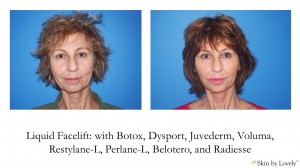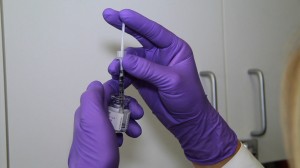Camas, WA
Injectables
Skin Rejuvenation
Hair Restoration & Growth
Shop By Category
What is the difference? How long does it last? Which one works better? Is it possible to ‘water down?’All questions you may have now that there are multiple neurotoxins on the market, and deciding which one is best for you may be confusing! Find the answers to your most pressing questions below.
What is the difference?
Essentially both Botox and Dysport are very similar products made by two competing companies, Allergan and Galderma. Somewhat like Coke and Pepsi. Botox has been FDA cleared and on the U.S. market for longer, making it the ‘gold standard’ product. Both have an identical ‘mechanisms of action,’ meaning they work in the same way to relax muscle movement in the treated areas to soften fine lines and prevent lines from forming or worsening. Botox typically takes 4-7 days to take affect, while Dysport is known to work a little faster, in 24-48 hours.

How long does it last?
Treatment duration depends on the dosing, or volume of each product, and the treatment area. For example, Botox in the frown lines or forehead has an effect for 3-4 months, but like any medication, the efficacy and duration is directly correlated to the dosing, measured in units in this case. That being said, in anecdotal terms, you may notice Botox or Dysport lasts longer when used in the underarms for excess sweating, possibly up to 6 months. And you may have a shorter duration if the treatment region has a lot of movement and strong muscles, such as around the mouth for smokers lines in the upper lip, or to prevent frowning in the lower face.
Botox vs Dysport: Which one works better?
They are essentially equal in studies, and each company works to prove their product is superior, but there are a few things to consider when working with your provider to find the best fit. There is a circulating theory among providers that Dysport seems to have a spreading affect. This is good and bad. Due to its spread, it is a great product in a location like the underarms when product spread prevents sweating. And it also can be beneficial in a region where ‘less is more’ and you want a soft natural appearance, like around the eyes or ‘crow’s feet’ area. Also, if you have been consistent with Botox for years on end, you may notice decreased efficacy over time, meaning your Botox doesn’t quite do the job of lasting the typical 3-4 months, or you may need more and more units to do the same job. If this is the case, consider Dysport. Switching it up may make it last longer and be more efficient.
Watered Down Botox?
 Here is the scoop: Botox and Dysport come from the manufacturer to the office in the vial as a powder. All neurotoxins must be mixed with saline in order to make the medication an injectable solution. Yes, the volume of saline is not always consistent from office to office or practitioner to practitioner, but a UNIT is very standardized and should be the same across every practice in the US. If more saline is added, the more volume is injected, a Botox unit is a Botox unit and should be consistent throughout practices and practitioners. This being said, if your results seem to be variable, consider trying the alternate neurotoxin. Technique and experience of provider can also add an element of variability, so always feel comfortable and confident in your provider and treatment regimen.
Here is the scoop: Botox and Dysport come from the manufacturer to the office in the vial as a powder. All neurotoxins must be mixed with saline in order to make the medication an injectable solution. Yes, the volume of saline is not always consistent from office to office or practitioner to practitioner, but a UNIT is very standardized and should be the same across every practice in the US. If more saline is added, the more volume is injected, a Botox unit is a Botox unit and should be consistent throughout practices and practitioners. This being said, if your results seem to be variable, consider trying the alternate neurotoxin. Technique and experience of provider can also add an element of variability, so always feel comfortable and confident in your provider and treatment regimen.
For more details about whether Botox or Dysport is right for you, contact our injection specialists at Skin by Lovely in Portland, OR or Santa Monica, CA.